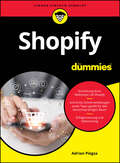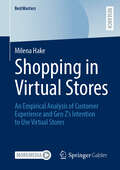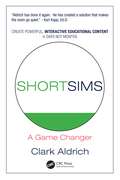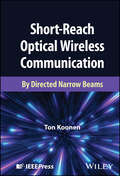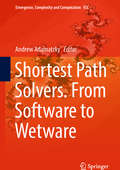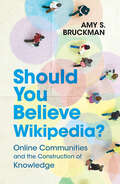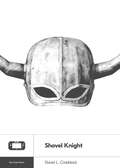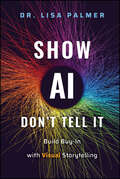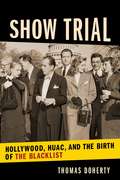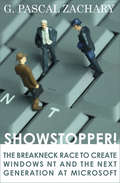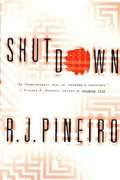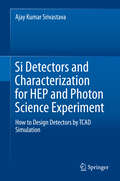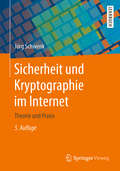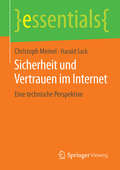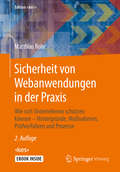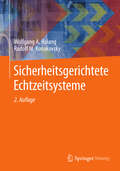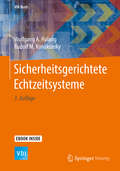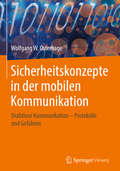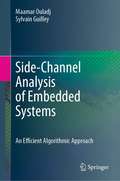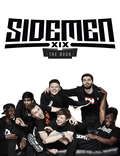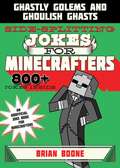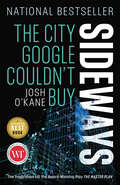- Table View
- List View
Shopify für Dummies (Für Dummies)
by Adrian PiegsaIn kürzester Zeit erfolgreich auf Shopify Mit Shopify bauen Sie Ihren eigenen Online-Shop, der perfekt zu Ihren Bedürfnissen passt. Adrian Piegsa gibt Ihnen einen Überblick über die Shop-Plattform, zeigt Ihnen, wie Sie sich zurechtfinden und worauf Sie achten müssen. Sie lernen Schritt für Schritt, wie Sie Ihren Webshop mit Kategorien und Produkten anlegen, Bestellungen abwickeln und Ihren Erfolg optimieren. Darüber hinaus erfahren Sie alles über Vertriebs- und Werbemöglichkeiten von Shopify und erhalten Tipps und Tricks im Umgang mit der Software ? speziell für den deutschsprachigen Raum. Sie erfahren Wie Sie sich auf Shopify zurechtfinden Was eine gute Shop-Struktur ausmacht Wie Sie Shopify-Apps sinnvoll nutzen Wie Sie Ihre Statistiken einsehen und auswerten
Shopping in Virtual Stores: An Empirical Analysis of Customer Experience and Gen Z’s Intention to Use Virtual Stores (BestMasters)
by Milena HakeHow can immersive virtual environments reshape the way Generation Z shops? Discover how virtual stores in the metaverse could revolutionize shopping for Gen Z. This study investigates the customer experience in virtual stores, its sensory, emotional, cognitive, social and immersive dimensions and their influence on Gen Z's behavioral intention to use virtual stores as a new shopping channel in the future. Drawing on a comprehensive analysis of 95 virtual stores and survey data from over 300 online shoppers, the findings reveal unexpected consumer patterns: introverts, individuals with no VR experience, and non-gamers exhibit a notably high openness toward virtual shopping environments. The study further identifies Gen Z's preference for virtual stores that seamlessly integrate the strengths of both physical and e-commerce shopping. This book offers a data-driven roadmap for designing engaging, future-ready virtual shopping experiences that resonate with the next generation of digital consumers. Dive into the future of immersive online shopping and learn how to engage and retain the next generation of consumers.
Short Season
by Scott Eller[from the back cover] "Striking Out For Brad, it's always been great having an older brother like Dean--to play stickball with, to have as a buddy or just to talk to. And on the baseball field, Dean's golden glove and Brad's hitting eye can't be beat. They're more than brothers--they're a team. But Dean's been acting different lately, and Brad doesn't know why. He hardly talks to Brad anymore--all of a sudden he's just too busy. Things are bad enough, but the league play-offs are coming up, and Brad doesn't have Dean to cover for him in the outfield anymore. Brad's spent his life being part of a team--can he really make it on his own?"
Short Sims: A Game Changer
by Clark AldrichShort Sims: A Game Changer explores the design concepts, dialogue, and formatting of interactive simulations. Interactivity is the key to effective educational media in schools, corporations, the military, and government. However, challenges like ineffective linear content or expenses can derail the product. This book provides a proven methodology to guide anyone through the steps of quickly creating highly engaging and responsive content. The process combines decades of research and implementations with leading organizations (Bill & Melinda Gates Foundation, Harvard Business School Publishing, Visa, State Department) with new tools that have just emerged. Key Features This book provides numerous code examples to illustrate how to put the techniques into practice. It includes expanded introductions to mathematics fundamental to computer graphics and game development. Graphics and physics are covered in introductory overviews. Author Bio Clark Aldrich is an education technology thought leader—the author of six books and developer of patent and award-winning projects. He currently builds custom Short Sims for organizations using a revolutionary methodology he has pioneered, or helps them build their own, through www.shortsims.com. He is also the host of an audio series called Education X Media (www.edbymedia.com) about evolving pedagogy in academics, corporations, and the military. He has been called a "guru" by Fortune Magazine and a "maverick" by CNN. Aldrich and his work have been featured in hundreds of other sources, including CBS, ABC, The New York Times, USA Today, the Associated Press, Wall Street Journal, NPR, CNET, Business 2.0, BusinessWeek, and U.S. News and World Report. He has written monthly columns for Training Magazine and Online Learning Magazine. Previously, he was the founder and former director of research for Gartner’s e-learning coverage. Earlier in his career, he worked on special projects for Xerox' executive team. He also served for many years as the Governor's representative on the education task force Joint Committee on Educational Technology, volunteered on several non-profit organizations aimed at child advocacy, and has served on numerous boards. He earned from Brown University a degree in cognitive science (during which he also taught at a leading environmental education foundation). He grew up in Concord, Massachusetts, and is the ninth great-grandson of Governors John Winthrop and Thomas Dudley, first and second governors of the Massachusetts Bay Colony, and Captain Walter Neale, the first colonial governor of lower New Hampshire.
Short-Reach Optical Wireless Communication: By Directed Narrow Beams
by Ton KoonenA deep dive into indoor optical wireless communication networks In Short-Reach Optical Wireless Communication: By Directed Narrow Beams, distinguished researcher Ton Koonen delivers an in-depth discussion of the design of indoor optical wireless networks and their key functions. The book explores the steering function for directing beams two-dimensionally to devices, the localization function for device finding and the receive function for devices in order to maximize the range of angles and aperture through which light can be captured. These functions have been analyzed, designed, realized, and validated, as well as integrated in a laboratory setting for proof of concept of bidirectional all-optical wireless communication. The book also includes: A thorough introduction to how key optical wireless communication techniques are realized and validatedIllustrative examples of optical wireless technologyPractical discussions of foundational concepts that underlie optical wireless communication and its expected benefits, and a comparison with radio wireless techniquesA large collection of figures, including photos of experimental setups, layouts of system concepts, and optical system modelling based on ray tracing analysis using MATLAB Perfect for academic and industrial researchers with an interest in optical wireless communication, Short-Reach Optical Wireless Communication: By Directed Narrow Beams will also benefit professionals working and studying in the areas of optical communication modules and systems.
Shortest Path Solvers. From Software to Wetware (Emergence, Complexity And Computation Ser. #32)
by Andrew AdamatzkyThis book offers advanced parallel and distributed algorithms and experimental laboratory prototypes of unconventional shortest path solvers. In addition, it presents novel and unique algorithms of solving shortest problems in massively parallel cellular automaton machines. The shortest path problem is a fundamental and classical problem in graph theory and computer science and is frequently applied in the contexts of transport and logistics, telecommunication networks, virtual reality and gaming, geometry, and social networks analysis. Software implementations include distance-vector algorithms for distributed path computation in dynamics networks, parallel solutions of the constrained shortest path problem, and application of the shortest path solutions in gathering robotic swarms. Massively parallel algorithms utilise cellular automata, where a shortest path is computed either via matrix multiplication in automaton arrays, or via the representation of data graphs in automaton lattices and using the propagation of wave-like patterns. Unconventional shortest path solvers are presented in computer models of foraging behaviour and protoplasmic network optimisation by the slime mould Physarum polycephalum and fluidic devices, while experimental laboratory prototypes of path solvers using chemical media, flows and droplets, and electrical current are also highlighted. The book will be a pleasure to explore for readers from all walks of life, from undergraduate students to university professors, from mathematicians, computers scientists and engineers to chemists and biologists.
Should You Believe Wikipedia?: Online Communities and the Construction of Knowledge
by Amy S. BruckmanAs we interact online we are creating new kinds of knowledge and community. How are these communities formed? How do we know whether to trust them as sources of information? In other words, Should we believe Wikipedia? This book explores what community is, what knowledge is, how the internet facilitates new kinds of community, and how knowledge is shaped through online collaboration and conversation. Along the way the author tackles issues such as how we represent ourselves online and how this shapes how we interact, why there is so much bad behavior online and what we can do about it. And the most important question of all: What can we as internet users and designers do to help the internet to bring out the best in us all?
Shovel Knight (Boss Fight Books)
by David L. CraddockIn 2014, Yacht Club Games released its very first game, Shovel Knight, a joyful 2D platformer that wears its NES influences on its sleeve. This unlikely pastiche of 8-bit inspirations manages to emulate the look, feel, and even the technical limitations of nostalgic titles like Mega Man, Zelda II, and Castlevania III—imbued with a contemporary sense of humor and self-awareness. But how is a fundamentally retro game created in the modern era? And what do the games of the past have to teach today's game designers? Based on extensive original interviews with the Yacht Club Games team, writer David L. Craddock unearths the story of a fledgling group of game developers who worked so well together at WayForward Games that they decided to start their own studio. From the high highs of Shovel Knight's groundbreaking Kickstarter to the low lows of its unexpectedly lengthy development, Boss Fight presents a new master class in how a great game gets made. Get ready to steel your shovel and dig into this fascinating oral history. For Shovelry!
Show AI--Don't Tell It: Build Buy-In with Visual Storytelling
by Lisa PalmerThe secret to AI adoption? Stop explaining the tech—help your organization visualize business success. Stakeholders don't invest in AI because they understand the tech—they invest when its business impact is clear and undeniable. In Show AI—Don't Tell It, AI executive and business strategist Dr. Lisa Palmer reveals how to use visual storytelling to make AI's value tangible, turning complex ideas into clear business outcomes that drive buy-in, adoption, and scale. Instead of vague theories and hype, this book provides clear frameworks, practical tools, and proven visualization techniques to help leaders secure funding, accelerate implementation, and maximize AI's impact. Applying her Bold AI Leadership Model, Dr. Palmer lays out a structured approach to AI success: Mindset: The four Applied AI Guiding Principles—Business Value, Speed with Rigor, Simplicity, and Human-Centricity—keep AI initiatives focused, efficient, and impactful. Strategic Priorities: The five AI Success Pillars—Value Creation, Customer-Centricity, Collaborative Teams, Cultural Shifts, and Data as a Strategic Asset—ensure AI drives measurable business results. Practical Tools: The Visualization Tool Decision Framework, featuring over 20 strategic visualization tools, helps leaders simplify complexity, overcome resistance, and communicate AI's impact with clarity and confidence. A must-read for executives, business leaders, and AI practitioners, Show AI—Don't Tell It provides the mindset, strategy, and tools needed to translate AI's potential into tangible value. Whether you're seeking stakeholder buy-in, funding approval, or faster adoption, this book shows you exactly how to use visual storytelling to accelerate business success with AI.
Show Trial: Hollywood, HUAC, and the Birth of the Blacklist (Film and Culture Series)
by Thomas DohertyIn 1947, the Cold War came to Hollywood. Over nine tumultuous days in October, the House Un-American Activities Committee held a notorious round of hearings into alleged Communist subversion in the movie industry. The blowback was profound: the major studios pledged to never again employ a known Communist or unrepentant fellow traveler. The declaration marked the onset of the blacklist era, a time when political allegiances, real or suspected, determined employment opportunities in the entertainment industry. Hundreds of artists were shown the door—or had it shut in their faces.In Show Trial, Thomas Doherty takes us behind the scenes at the first full-on media-political spectacle of the postwar era. He details the theatrical elements of a proceeding that bridged the realms of entertainment and politics, a courtroom drama starring glamorous actors, colorful moguls, on-the-make congressmen, high-priced lawyers, single-minded investigators, and recalcitrant screenwriters, all recorded by newsreel cameras and broadcast over radio. Doherty tells the story of the Hollywood Ten and the other witnesses, friendly and unfriendly, who testified, and chronicles the implementation of the postwar blacklist. Show Trial is a rich, character-driven inquiry into how the HUAC hearings ignited the anti-Communist crackdown in Hollywood, providing a gripping cultural history of one of the most transformative events of the postwar era.
Showstopper!: The Breakneck Race to Create Windows NT and the Next Generation at Microsoft
by G. Pascal ZacharyThis &“inside account captures the energy—and the madness—of the software giant&’s race to develop a critical new program. . . . Gripping&” (Fortune Magazine).Showstopper is the dramatic, inside story of the creation of Windows NT, told by Wall Street Journal reporter G. Pascal Zachary. Driven by the legendary David Cutler, a picked band of software engineers sacrifices almost everything in their lives to build a new, stable, operating system aimed at giving Microsoft a platform for growth through the next decade of development in the computing business. Comparable in many ways to the Pulitzer Prize–winning book The Soul of a New Machine by Tracy Kidder, Showstopper gets deep inside the process of software development, the lives and motivations of coders and the pressure to succeed coupled with the drive for originality and perfection that can pull a diverse team together to create a program consisting of many hundreds of thousands of lines of code.
Shutdown
by R. J. PineiroA faulty computer chip causes a fatal train accident, sending its manufacturer into a downward spiral. When the chip is traced to sabotage, an FBI agent and a hacker team up to investigate before the next shutdown.
Si Detectors and Characterization for HEP and Photon Science Experiment: How to Design Detectors by TCAD Simulation
by Ajay Kumar SrivastavaThis book reviews the HL-LHC experiments and the fourth-generation photon science experiments, discussing the latest radiation hardening techniques, optimization of device & process parameters using TCAD simulation tools, and the experimental characterization required to develop rad-hard Si detectors for x-ray induced surface damage and bulk damage by hadronic irradiation.Consisting of eleven chapters, it introduces various types of strip and pixel detector designs for the current upgrade, radiation, and dynamic range requirement of the experiments, and presents an overview of radiation detectors, especially Si detectors. It also describes the design of pixel detectors, experiments and characterization of Si detectors.The book is intended for researchers and master’s level students with an understanding of radiation detector physics. It provides a concept that uses TCAD simulation to optimize the electrical performance of the devices used in the harsh radiation environment of the colliders and at XFEL.
Si el colegio no existiera
by Ana Paulina Maya Z.Un libro que habla sobre el Homeschooling o la educación en casa. Ana Paulina Maya lleva trece años educando a sus cuatro hijos en casa y se ha convertido en un referente del homeschooling en Colombia. En este libro explica qué es el homeschooling y desmiente los mitos más frecuentes relacionados con este tema; describe cuáles son los aspectos básicos que se deben tener en cuenta a la hora de tomar la decisión de educar en casa, cómo es el día a día de una familia homeschooler y les da valiosas herramientas a quienes están considerando esta opción para la educación de sus hijos. A partir de descripciones detalladas, sustentos teóricos y su propia experiencia, la autora acompaña a los padres en este camino que cada vez tiene más fuerza en Colombia y en el mundo
Sicherheit und Kryptographie im Internet: Theorie und Praxis
by Jörg SchwenkDas vorliegende Buch bietet eine strukturierte, gut lesbare Einführung zu den wichtigsten Sicherheitsstandards im Internet. Hierzu zählen bekannte Standards wie TLS, OpenPGP, S/MIME, SSH, IPsec und WPA, aber auch die versteckten Sicherheitsfeatures aus der Microsoft-Welt (PPTP, Kerberos), dem Mobilfunk, DNSSEC, Single-Sign-On-Protokollen und Datenformaten wie XML und JSON. Das Verständnis für diese Standards und deren Weiterentwicklung wird durch eine detaillierte Beschreibung der bekannten Angriffe vertieft, insbesondere für TLS liegt hier umfangreiches Material vor.Die 5. Auflage wurde erheblich erweitert und aktualisiert. Neue Themen sind unter anderem die WLAN-Standards WPA2 und WPA3, die neue TLS-Version 1.3, Kerberos, Anti-SPAM-Techniken und moderne Single-Sign-On-Protokolle. Das Thema TLS wird völlig neu dargestellt, und die Kapitel zu E-Mail-Sicherheit und IPsec deutlich erweitert. Eine umfangreiche Einführung in praktische Aspekte der Kryptographie macht dieses Buch ohne zusätzliche Literatur nutzbar.
Sicherheit und Vertrauen im Internet: Eine technische Perspektive (essentials)
by Christoph Meinel Harald SackDas globale Internet ist ein offenes Netz, das heißt nicht begrenzt und für jedermann zugänglich. Allerdings hat diese Offenheit ihren Preis: Es gibt keine zentrale Kontrolle, die z. B. Unbefugten Einblick in die Kommunikation und damit in die Privatsphäre anderer Internetnutzer verwehren würde. Um dennoch einen ausreichenden Schutz der Vertraulichkeit und Privatsphäre zu gewährleisten, müssen in eigener Verantwortung Techniken und Tools aus der Kryptografie eingesetzt werden, die Nachrichten verschlüsseln oder deren Unversehrtheit sicherstellen helfen. Die Autoren zeigen unterschiedliche Wege auf, wie der Schutz der Privatsphäre im Internet wiederhergestellt werden kann.
Sicherheit von Webanwendungen in der Praxis: Wie Sich Unternehmen Schu?tzen Ko?nnen -- Hintergru?nde, Maßnahmen, Pru?fverfahren Und Prozesse (Edition Kes Ser.)
by Matthias RohrWebanwendungen bilden in Unternehmen zahlreiche sensible Geschäftsprozesse ab – ob mit Kunden, mit Mitarbeitern, Partnern und Zulieferern. Daher sind Webapplikationen ein Sicherheitsrisiko für Unternehmen und ihr Schutz von entscheidender Bedeutung. In dem Buch beleuchtet der Autor die wichtigsten Aspekte der Webanwendungssicherheit und stützt sich dabei auf seine langjährige Erfahrung als IT-Security-Berater für Webanwendungen und Entwicklungsprozesse.Der Band bietet neben einem allgemeinen Überblick zum Thema Sicherheit von Webanwendungen ausführliche und praxisorientierte Darstellungen zu wichtigen Einzelfragen: Was sind die häufigsten Schwachstellen und mit welchen Maßnahmen lassen sich Webanwendungen am effektivsten gegen Angriffe absichern? Ein eigenes Kapitel befasst sich mit den Verfahren, die eingesetzt werden, um die Sicherheit von Anwendungen bereits im Entwicklungsprozess zu bewerten und zu überprüfen. Der Autor erläutert zudem, wie sich die Sicherheit in selbst entwickelten und zugekauften Webanwendungen durch organisatorische Prozesse nachhaltig verbessern lässt.Die zweite Auflage des 2014 erstmals erschienen Buchs wurde vor dem Hintergrund neuer Techniken zur Abwehr von Angriffen und neuer Prüfverfahren vollständig überarbeitet und aktualisiert. Auch aktuelle Beratungsprojekte des Autors haben Eingang in die Neuauflage gefunden – insbesondere dort, wo es um organisatorische Aspekte von Webanwendungssicherheit geht.Der Band richtet sich an Entwickler von Webanwendungen, IT-Security- und Qualitätsmanager genauso wie an Leser, die sich in das Thema Webanwendungssicherheit einarbeiten wollen.
Sicherheitsgerichtete Echtzeitsysteme
by Wolfgang A. Halang Rudolf M. KonakovskyDas Buch behandelt das wichtige Thema Sicherheit bei elektronischen Systemen. Anhand begrifflicher, methodischer und konzeptioneller Grundlagen sicherheitsgerichteter Echtzeitsysteme wird in die Denkweise der Sicherheitstechnik eingeführt. Architekturen für sichere Hardware sowie Verfahren zur Erstellung möglichst fehlerfreier Software und zu deren Verifizierung werden dargestellt und quantitativ bewertet. Weiterhin werden Ergebnisse jüngster Forschungen vorgestellt, so u.a. inhärent sicherheitsfördernde Paradigmen der Echtzeitprogrammierung und -ablauforganisation sowie unkonventionelle sicherheitsgerichtete Architekturen für sicherheitstechnisch abnehmbare Feldbusse und programmierbare elektronische Systeme. Das Buch wurde für die 2. Auflage gründlich überarbeitet und um die Darstellung neuer Patente erweitert.
Sicherheitsgerichtete Echtzeitsysteme
by Wolfgang A. Halang Rudolf M. KonakovskyDas Buch behandelt das wichtige Thema funktionale Sicherheit programmierbarer elektronischer Systeme. Anhand begrifflicher, methodischer und konzeptioneller Grundlagen sicherheitsgerichteter Echtzeitsysteme wird in die Denkweise der Sicherheitstechnik eingeführt. Architekturen für sichere Hardware sowie Verfahren zur Erstellung möglichst fehlerfreier Software und zu deren Verifizierung werden dargestellt und bewertet. Weiterhin werden Ergebnisse jüngster Forschungen vorgestellt wie inhärent sicherheitsfördernde Paradigmen der Echtzeitprogrammierung und -ablauforganisation oder unkonventionelle sicherheitsgerichtete Architekturen für sicherheitstechnisch abnehmbare Feldbusse und programmierbare elektronische Systeme.Das Buch wurde für die 3. Auflage gründlich überarbeitet und um die Darstellung neuer Patente und Normen erweitert. Die ZielgruppenStudierende der Automatisierungstechnik und der Informatik sowie Systemarchitekten und Entwickler.
Sicherheitskonzepte in der mobilen Kommunikation: Drahtlose Kommunikation – Protokolle und Gefahren
by Wolfgang W. OsterhageErfahren Sie in diesem Buch alles über IT-Sicherheit in der drahtlosen KommunikationDurch Computer, das Internet und die digitale Vernetzung hat die drahtlose Kommunikation eine neue Qualität erreicht – sowohl für private Nutzer als auch für Unternehmen und Organisationen. Diese Entwicklung führt zu neuen Herausforderungen für die Sicherheit im Bereich der Kommunikationstechnik. In seinem ausführlichen Buch über IT-Sicherheit gibt Wolfgang Osterhage einen umfassenden Überblick über aktuelle Sicherheitsrisiken in der Kommunikationstechnologie. Er hilft IT-Sicherheitsverantwortlichen und Praktikern dabei, sicherzustellen, dass mögliche Eindringlinge keinen Zugriff auf sensible Daten oder Systemfunktionalitäten erhalten. Sein Buch über IT-Sicherheit in der mobilen Kommunikation unterstützt optimal dabei, zuverlässige Komplettchecks aller drahtlosen Anwendungen von Organisationen und Unternehmen oder auch im privaten Bereich durchzuführen.Behandelte Themenkomplexe und Aufbau der einzelnen KapitelIn seinem Buch „Sicherheit in der mobilen Kommunikation“ gibt Wolfgang Osterhage den aktuellen Stand der drahtlosen Kommunikationstechnologie wieder und beleuchtet verschiedene Sicherheitskonzepte. Er behandelt folgende Themenkomplexe:• WLAN• Mobiltelefonie• Bluetooth• Infrarot• NFCNach diesen Technologien hat er sein Buch über IT-Security in einzelne Kapitel untergliedert. Jedes dieser Kapitel folgt wiederum einem festen Aufbau:1. Technologische Grundlagen2. Mögliche Bedrohungsszenarien3. Organisatorische und technische GegenmaßnahmenSomit bietet das Werk praktische Lösungsansätze für die zuvor beschriebenen Sicherheitsprobleme. Da jedes Kapitel in sich abgeschlossen ist, eignet sich das Buch über drahtlose IT-Sicherheitsarchitekturen optimal zum Querlesen.Bedrohungsszenarien aus dem Unternehmensalltag und ausführliche ChecklistenOsterhages Buch über IT-Sicherheit im Bereich der mobilen Kommunikation liefert zusätzlich zu jeder behandelten Technologie eine umfangreiche Checkliste, welche grundsätzlich als zweispaltige Tabelle aufgebaut ist. Darin beantwortet Osterhage detailliert wichtige Fragen zum Thema Kommunikationssicherheit. Er beleuchtet in seinem Buch außerdem strategische Ansätze und geht genauer auf technische Details ein. Weiterhin liefert das Buch über IT-Sicherheit in der drahtlosen Kommunikation Warnhinweise, falls in einem bestimmten Bereich Bedrohungen vorliegen. Somit deckt es alle wesentlichen Aspekte drahtloser Sicherheit optimal ab.
Side-Channel Analysis of Embedded Systems: An Efficient Algorithmic Approach
by Sylvain Guilley Maamar OuladjIt has been more than 20 years since the seminal publications on side-channel attacks. They aim at extracting secrets from embedded systems while they execute cryptographic algorithms, and they consist of two steps, measurement and analysis. This book tackles the analysis part, especially under situations where the targeted device is protected by random masking. The authors explain advances in the field and provide the reader with mathematical formalizations. They present all known analyses within the same notation framework, which allows the reader to rapidly understand and learn contrasting approaches. It will be useful as a graduate level introduction, also for self-study by researchers and professionals, and the examples are taken from real-world datasets.
Sidemen: The Book
by The SidemenBillions of you have watched their videos and millions of you have followed them on social media.So here we go; it's time to back up because YouTube superstars, The Sidemen, are finally here in book form and they're dishing the dirt on each other as well as the YouTube universe. There's nowhere to hide as KSI, Miniminter, Behzinga, Zerkaa,Vikkstar123, Wroetoshaw and Tobjizzle go in hard on their living habits, their football ability, and their dodgy clobber, while also talking Fifa, Vegas and superheroes. They'll also give you their grand house tour, letting you in on a few secrets, before showing you their hall of fame, as well as revealing some of their greatest shames.Along the way you'll learn how seven of the world's biggest YouTube stars started off with nothing more than a computer console, a PC and a bad haircut before joining forces to crush the internet. And they'll tell you just how they did it (because they're nice like that) with their ultimate guide to YouTube while also sharing their memories of recording their favourite videos as well as a typical day in the life of The Sidemen.You'll feel like you're with them every step of the way, smelling the 'sweet' aroma of the boys' favourite dishes in the kitchen, stamping your passport as you follow them on their trips around the world and kicking every ball as the boys gear up for the biggest football match of their lives. It's going to get personal. It's going to get intense, and JJ is going to have lots of tantrums, so take a moment to prepare yourself, because this is The Sidemen book you've been waiting for!
Sidemen: The book you've been waiting for
by The SidemenBillions of you have watched their videos and millions of you have followed them on social media.So here we go; it's time to back up because YouTube superstars, The Sidemen, are finally here in book form and they're dishing the dirt on each other as well as the YouTube universe. There's nowhere to hide as KSI, Miniminter, Behzinga, Zerkaa,Vikkstar123, Wroetoshaw and Tobjizzle go in hard on their living habits, their football ability, and their dodgy clobber, while also talking Fifa, Vegas and superheroes. They'll also give you their grand house tour, letting you in on a few secrets, before showing you their hall of fame, as well as revealing some of their greatest shames.Along the way you'll learn how seven of the world's biggest YouTube stars started off with nothing more than a computer console, a PC and a bad haircut before joining forces to crush the internet. And they'll tell you just how they did it (because they're nice like that) with their ultimate guide to YouTube while also sharing their memories of recording their favourite videos as well as a typical day in the life of The Sidemen.You'll feel like you're with them every step of the way, smelling the 'sweet' aroma of the boys' favourite dishes in the kitchen, stamping your passport as you follow them on their trips around the world and kicking every ball as the boys gear up for the biggest football match of their lives. It's going to get personal. It's going to get intense, and JJ is going to have lots of tantrums, so take a moment to prepare yourself, because this is The Sidemen book you've been waiting for!
Sidesplitting Jokes for Minecrafters: Ghastly Golems and Ghoulish Ghasts (Jokes For Minecrafters #4)
by Brian BooneSidesplitting Jokes for Minecrafters: Ghastly Golems and Ghoulish Ghasts is the fourth book in the Jokes for Minecrafters series, which has more than 800 belly laughs waiting for you! This laugh-a-minute book leaves no enderman or zombie unscathed, and comes complete with silly illustrations for even more fun! <p><p> For kids ages 5 and up, this book of jokes will have all your friends and family doubling over! Bust out the funniest of these Minecrafter jokes at home or school for endless jokes and fun! <p> This adventure series is created especially for readers who love the fight of good vs. evil, magical academies like Hogwarts in the Harry Potter saga, and games like Minecraft, Terraria, and Pokemon GO.
Sideways: The City Google Couldn't Buy
by Josh O'KaneNATIONAL BESTSELLERFINALIST FOR THE WRITERS' TRUST SHAUGHNESSY COHEN PRIZE FOR POLITICAL WRITINGFrom the Globe and Mail tech reporter who revealed countless controversies while following the Sidewalk Labs fiasco in Toronto, an uncompromising investigation into the bigger story and what the Google sister company's failure there reveals about Big Tech, data privacy and the monetization of everything.When former New York deputy mayor Dan Doctoroff landed in Toronto, promising a revolution in better living through technology, the locals were starstruck. In 2017 a small parcel of land on the city's woefully underdeveloped lakeshore was available for development, and with Google co-founder Larry Page and his trusted chairman Eric Schmidt leaning into Sidewalk Labs' pitch for the long-forsaken property—with Doctoroff as the urban-planning company's CEO—Sidewalk's bid crushed the competition. But as soon as the bid was won, cracks appeared in the partnership between Doctoroff's team and Waterfront Toronto, the government-sponsored organization behind the contest. There were hundreds more acres of undeveloped former port lands nearby that kept creeping into conversation with Sidewalk, and more questions were emerging than answers about how much the public would actually benefit from the Alphabet-owned company's vision for the high-tech neighbourhood—and the data it could harvest from the people living there. Alarm bells began ringing in the city's corridors of power and activism. To Torontonians accustomed to big promises with little follow-through, the fiasco that unfolded seemed at first like just another city-building sideshow. But the pained battle to reel in the power of Sidewalk Labs became a crucible moment in the worldwide battle for privacy rights and against the extension of Big Tech&’s digital might into the physical world around us. With extensive contacts on all sides of the debacle, O'Kane tells a story of global consequence fought over a small, forgotten parcel of mud and pavement, taking readers from California to New York to Toronto to Berlin and back again. In the tradition of extraordinary boardroom dramas like Bad Blood and Super Pumped, Sideways vividly recreates the corporate drama and epic personalities in this David-and-Goliath battle that signalled to the world that all may not be lost in the effort to contain the rapidly growing power of Big Tech.
